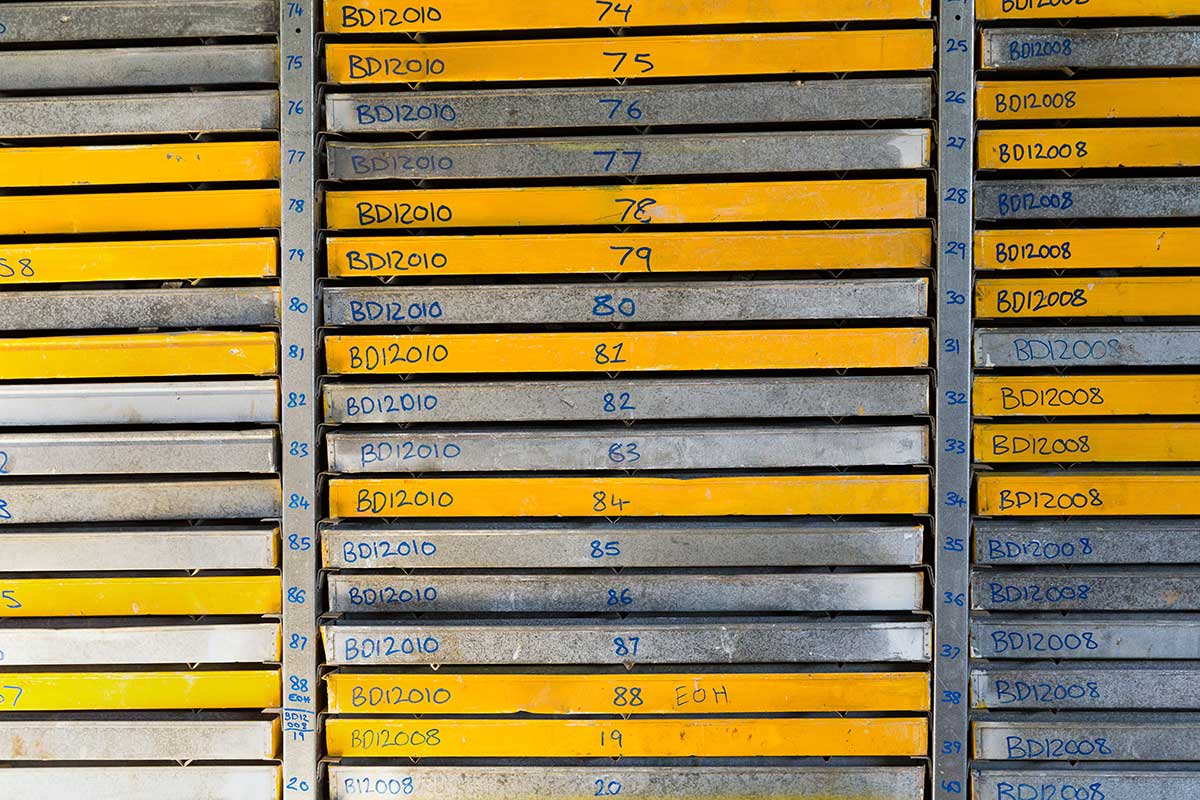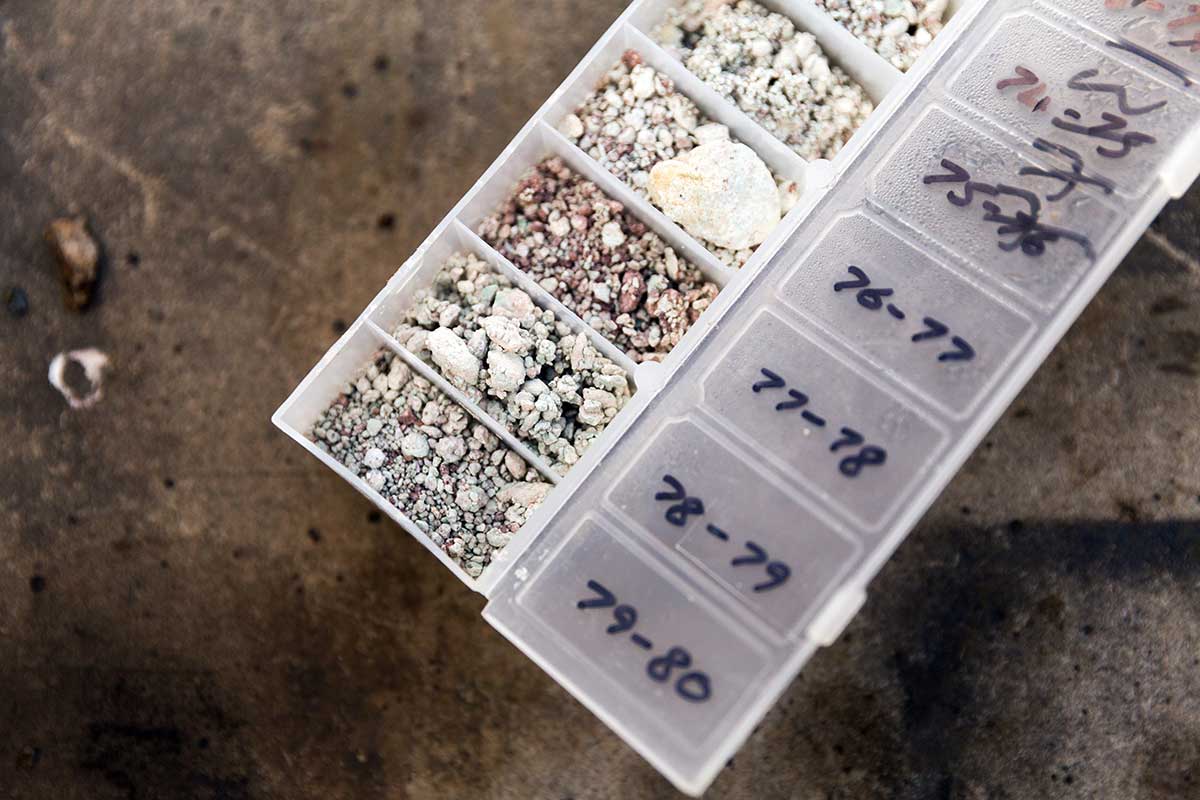


GEOLOGY
The Bowdens Silver Deposit is hosted within the Permian Rylstone Volcanics at the base of the Sydney Basin. This series of volcanic rocks were the result of a flow of hot ash that erupted from a volcano some distance from the project’s current location around 290 million years ago. As material was ejected from the eruption, it flowed downhill in an avalanche of ash and broken rock. Eventually it came to rest on top of some much older rocks and, whilst still hot, it welded hard into the rock sequences we see today.
It is possible that the volcanic rocks themselves capped over a geothermal hot spring that was bringing hot water from deep within the earth. This hot water was rich in dissolved minerals and metals. As this hot water tried to get back to the surface it cracked and broke through the volcanics and deposited its metal including silver, sphalerite (a zinc mineral) and galena (a lead mineral).
The Bowdens Silver Deposit is the only known mineral resource in the Permian volcanics of New South Wales. It is distinctly an epithermal deposit hosted in tuff and ignimbrite sequences. These sequences dip gently to the north and areas of the highest grade mineralization sit within the brittle fractures of the ignimbrite. There are several styles of mineralization at Bowdens Silver including steeply dipping veins and fault zones, stockwork zones, breccias with massive sulphide matrices and disseminated sulphide in the country rock.
Beneath the volcanics there are series of quartz veins hosted in the Ordovician and Silurian sediments and mafic volcanics. These veins contain high grade gold and silver with chalcopyrite (a copper mineral) as well as sphalerite and galena. These deeper zones are thought to be source pathways of the mineralization in the upper volcanic sequences and are also exposed at surface throughout the Ordovician and Silurian rocks of the area to the north and south of the Bowdens Silver Deposit.



